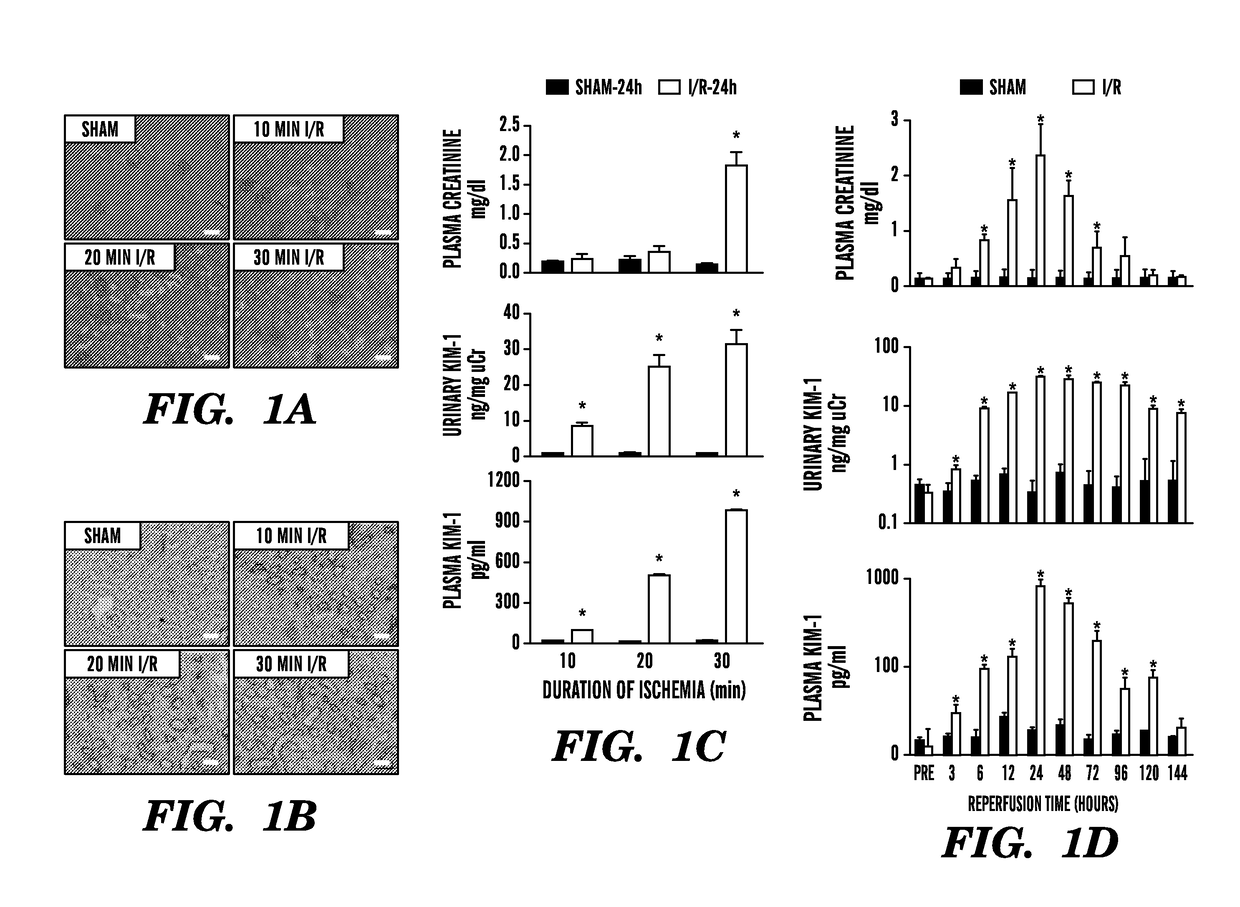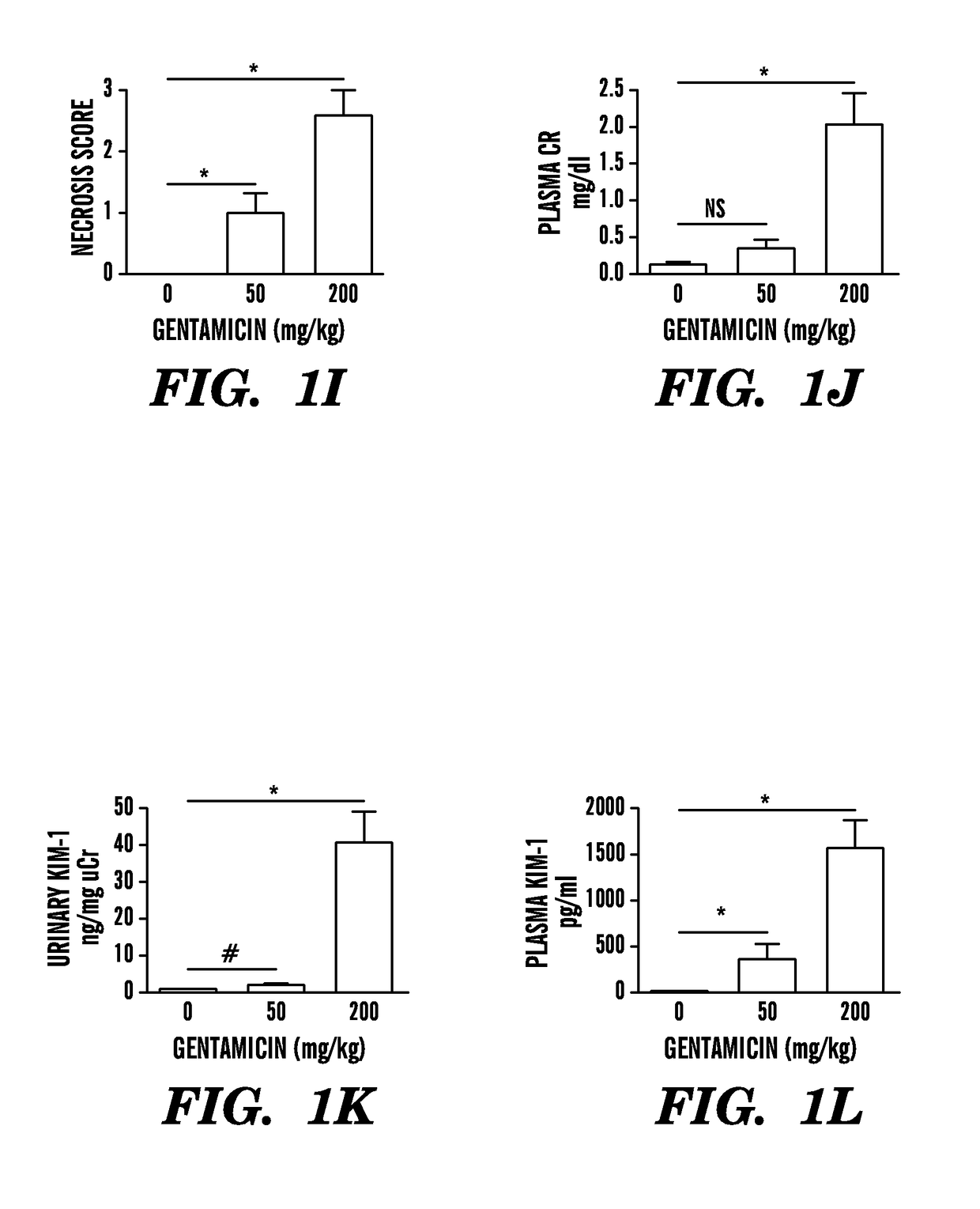Circulating kim-1 levels for detection of pathologies associated with injury to, or cancer of, the kidney
a kidney injury and kim-1 technology, applied in the field of kidney injury molecule1, can solve the problems of misleading aki, limited use of kim-1 as a urinary biomarker, and inability to meet the needs of routine clinical care, so as to achieve accurate and sensitive plasma and serum circulating biomarkers, accurate and sensitive, and increase the effect of kim-1
- Summary
- Abstract
- Description
- Claims
- Application Information
AI Technical Summary
Benefits of technology
Problems solved by technology
Method used
Image
Examples
example 1
[0301]Kidney injury molecule-1 (KIM-1), also known as hepatitis A virus cellular re-ceptor 1 and T-cell immunoglobulin mucin1, is a transmembrane glycoprotein originally discovered using representational difference analysis in an effort to identify molecules that are significantly upregulated after acute ischemic kidney injury.1 The ectodomain of KIM-1 (approximately 90 kD) is cleaved by matrix metalloproteinases and is present in the urine in rodents and humans after kidney proximal tubular injury.2,3 Since its discovery, KIM-1 has emerged as a sensitive and specific urinary biomarker of kidney injury in both rodent models and humans.4-7 Recognizing its importance, the US Food and Drug Administration and the European Medicines Agency qualified KIM-1 as a urinary biomarker in the context of drug-induced nephrotoxicity in rat models and in clinical studies on a case-by-case basis.8,9
[0302]The inventors assessed herein if KIM-1 is released into the circulation after kidney proximal t...
example 2
[0304]KIM-1 Protein Levels in the Blood in Rodent Models of AKI
[0305]To measure KIM-1 in serum and plasma specimens, we first established an appropriate assay for rodents and humans. Accurate measurement of blood biomarkers poses several technical challenges because blood contains a high content of potentially interfering proteins and different dynamic ranges of biomarker levels compared with urine. To this end, the inventors have rigorously re-evaluated and validated both rodent and human KIM-1 assays that they had previously developed.5,7 for the quantitation of serum and plasma KIM-1 levels by characterizing reproducibility, assay range, spike-recovery, interference, and linearity of dilution (Table 3). As shown in FIG. 1C, compared with plasma KIM-1 levels in sham-operated mice (15±2.1 pg / ml), KIM-1 levels were significantly elevated in rodents by >7-fold (112±18 pg / ml), >33-fold (502±17 pg / ml), and >65-fold (987±15 pg / ml) 24 hours after reperfusion and after 10, 20, or 30 minut...
example 3
[0310]KIM-1 Protein Levels in the Blood of Human Subjects with AKI
[0311]The inventors extended the animal model studies to humans to evaluate whether plasma KIM-1 is elevated in patients with AKI. Plasma and urine samples were obtained from 48 healthy volunteers, 16 post-cardiac surgery (CS) patients without AKI who were admitted to the intensive care unit (ICU), and 28 patients who developed AKI following cardiac surgery (n=22) or after admission to the ICU due to other causes (n=6). AKI samples were chosen to be close in time to peak serum creatinine values. AKI was defined using KidneyDisease Improving Global Outcomes (KDIGO) criteria as a $50% increase in plasma creatinine over baseline within 7 days or an increase in serum creatinine by 0.3 mg / dl within 2 days.13 An increase in serum creatinine concentration is currently used for the diagnosis of functional AKI, although it has limited sensitivity and specificity.4,14
[0312]Demographic characteristics, clinical descriptions, se...
PUM
 Login to View More
Login to View More Abstract
Description
Claims
Application Information
 Login to View More
Login to View More - R&D
- Intellectual Property
- Life Sciences
- Materials
- Tech Scout
- Unparalleled Data Quality
- Higher Quality Content
- 60% Fewer Hallucinations
Browse by: Latest US Patents, China's latest patents, Technical Efficacy Thesaurus, Application Domain, Technology Topic, Popular Technical Reports.
© 2025 PatSnap. All rights reserved.Legal|Privacy policy|Modern Slavery Act Transparency Statement|Sitemap|About US| Contact US: help@patsnap.com



